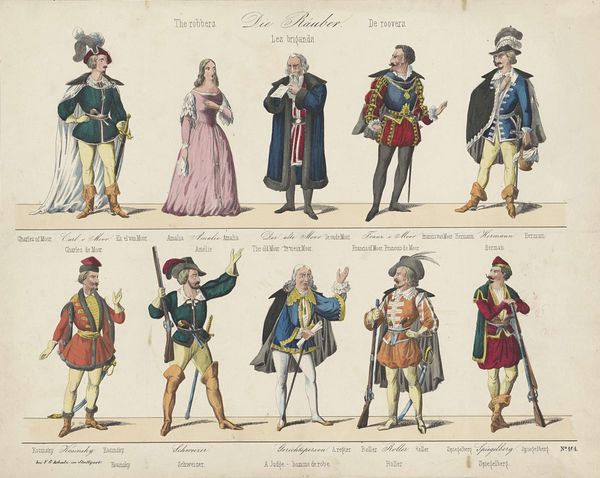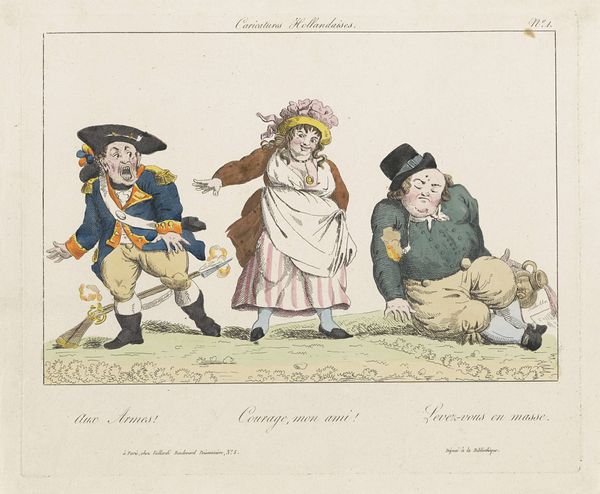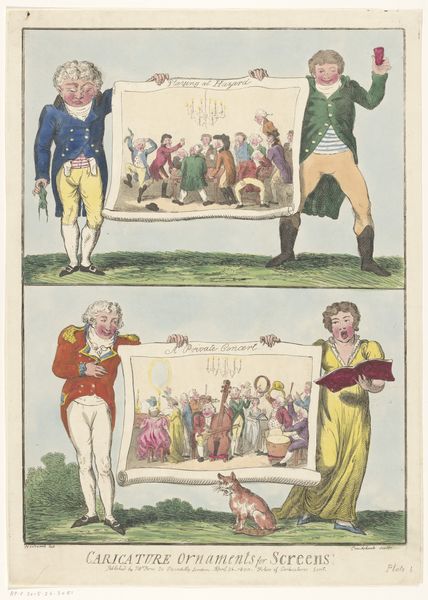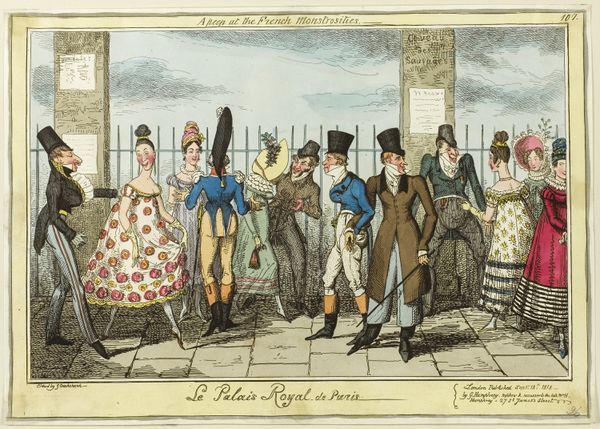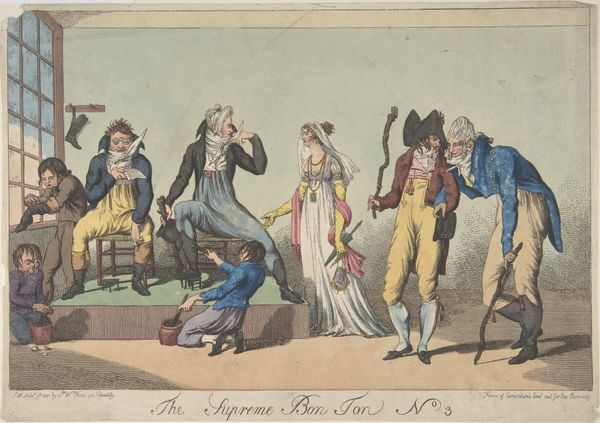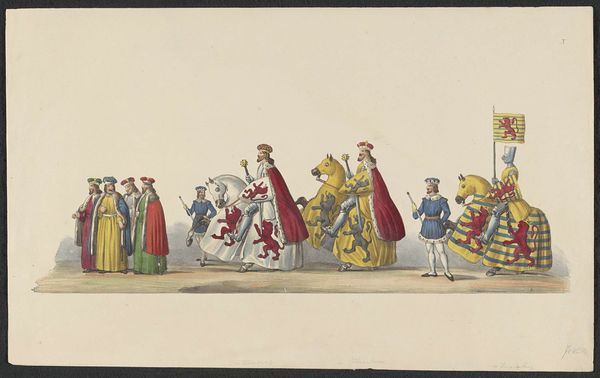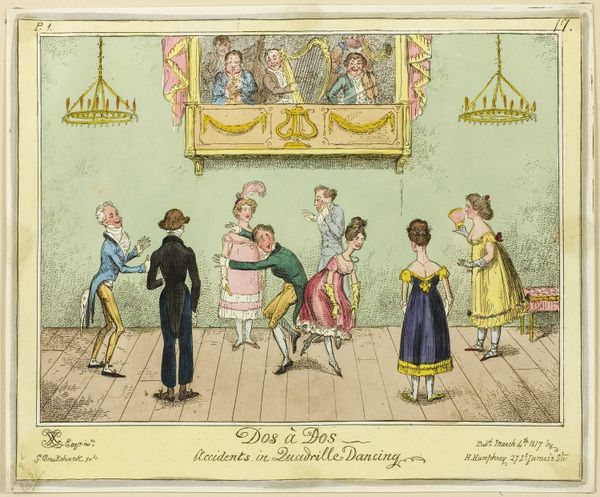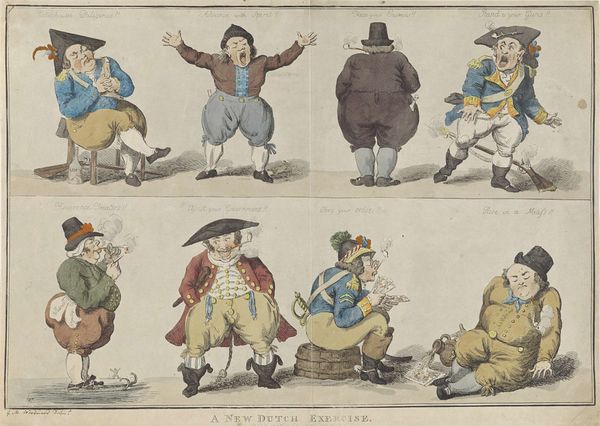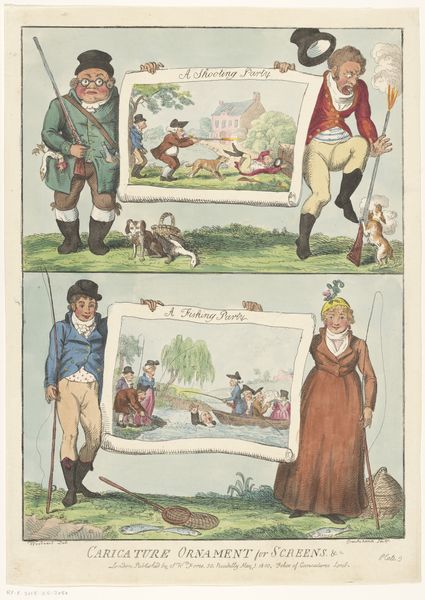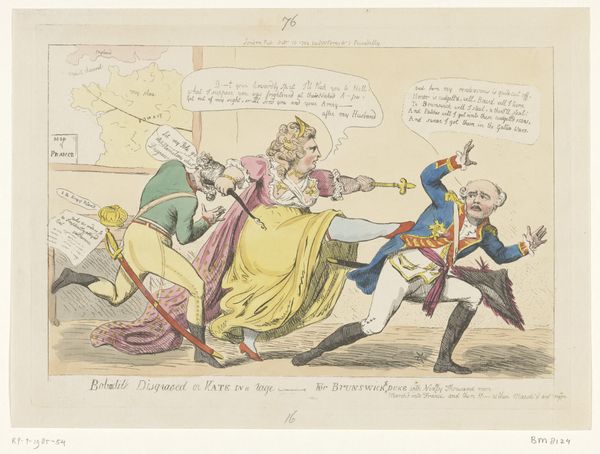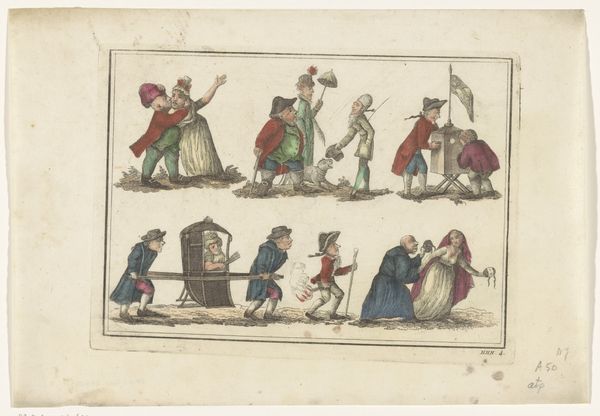
Dimensions: Sheet (trimmed within plate): 10 3/8 × 14 15/16 in. (26.4 × 37.9 cm)
Copyright: Public Domain
Henry William Bunbury made “A Long Minuet,” a print, probably sometime in the late 1700s. It's an etching, a process that involves biting lines into a metal plate with acid, then inking the plate to make an impression on paper. Look closely, and you’ll see that the figures and their clothing are defined by these etched lines, which give the image its distinctive character. Bunbury’s choice of printmaking – a relatively inexpensive medium – allowed him to reach a wide audience with his satirical commentary on British society. The minuet, a slow, stately dance, was a favorite pastime of the upper classes. Here, Bunbury exaggerates the dancers’ postures, with its mincing steps and elaborate costumes. These are tied to wider social issues of labor, politics, and consumption. The fashion of the elite was predicated on materials such as silk, dyes, and wigs, all of which involved the labor of others, sometimes enslaved people. By focusing on the materials and processes used to create "A Long Minuet," and the social context in which it was made, we can better understand the full meaning of this artwork, challenging traditional distinctions between fine art and craft.
Comments
No comments
Be the first to comment and join the conversation on the ultimate creative platform.
